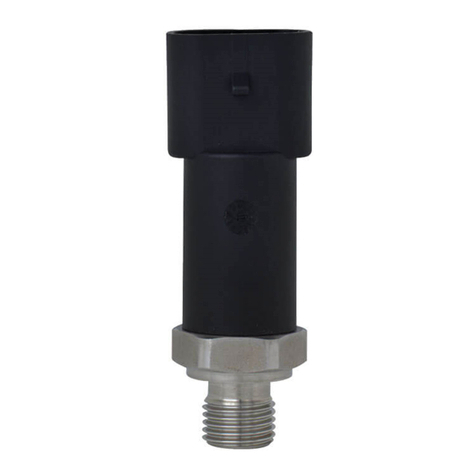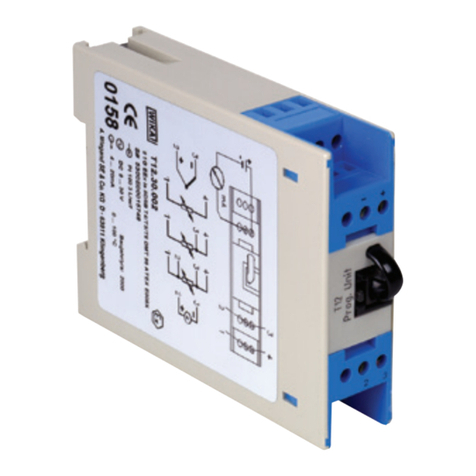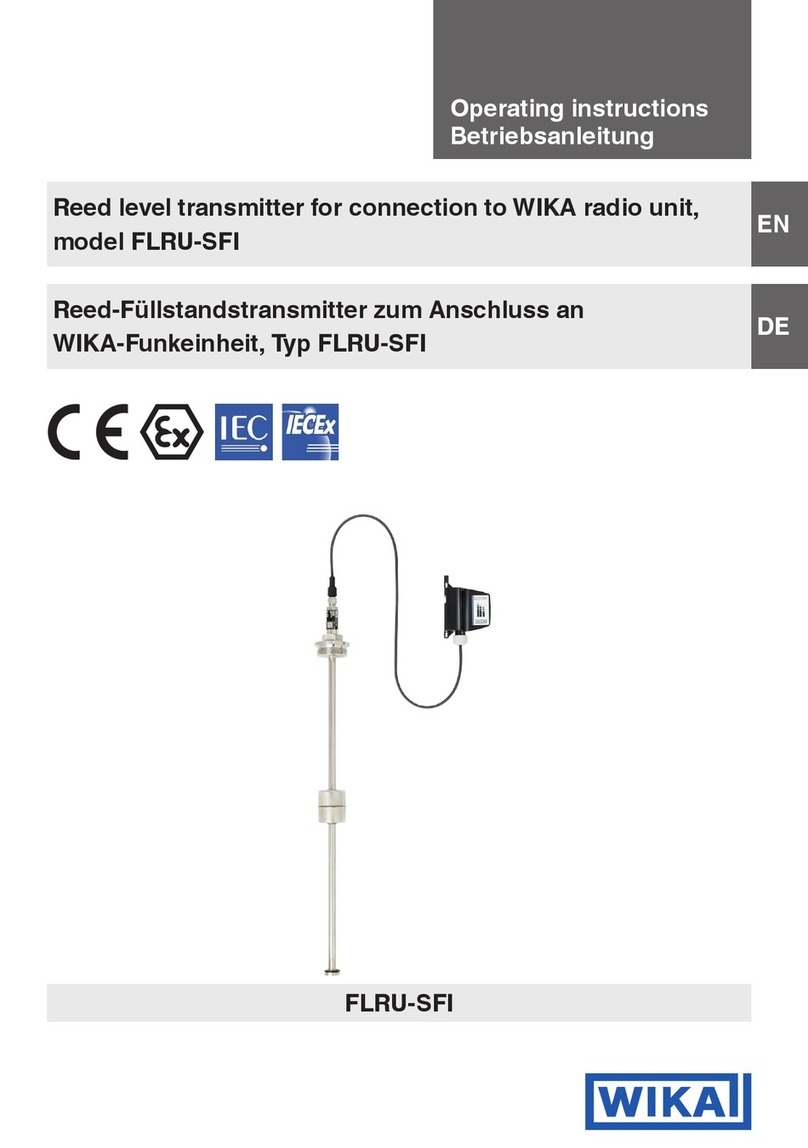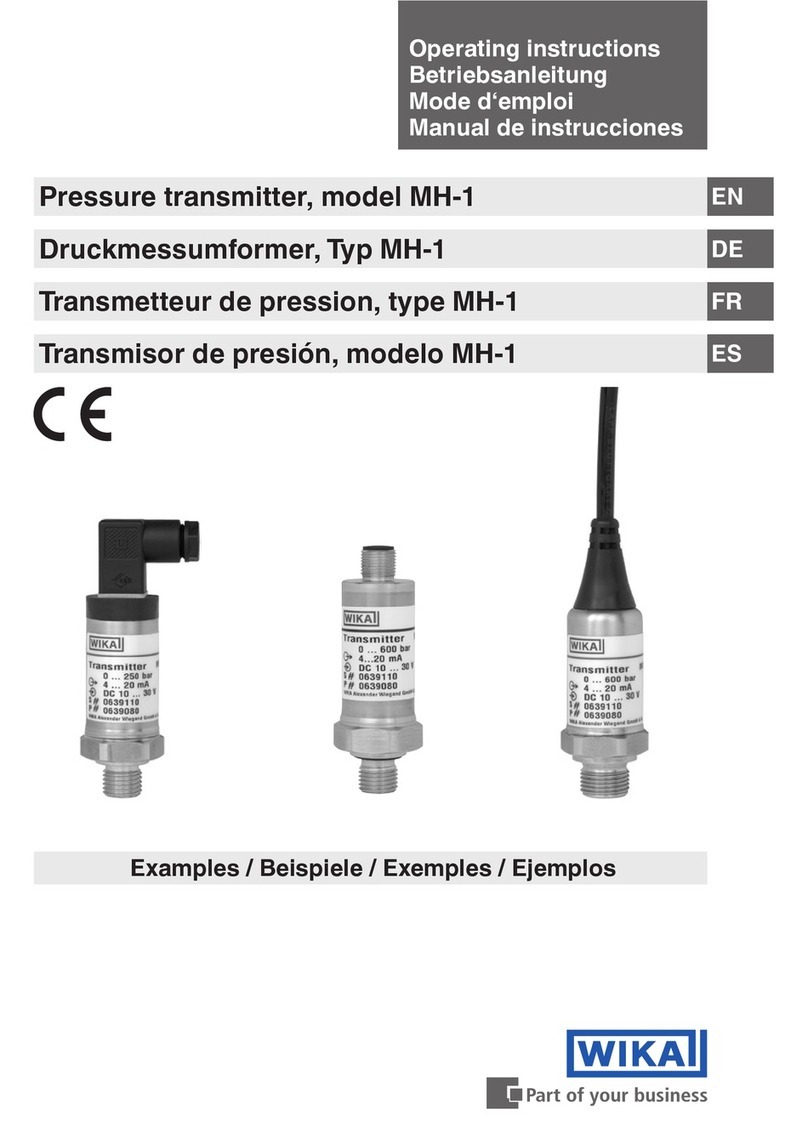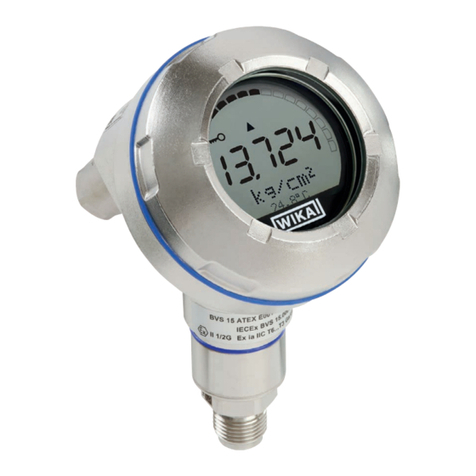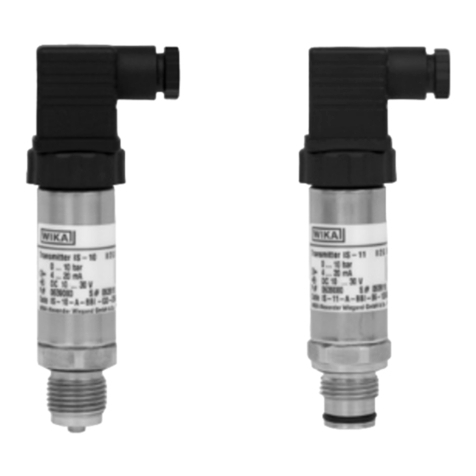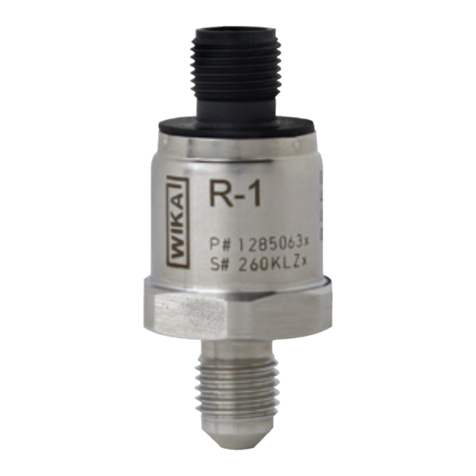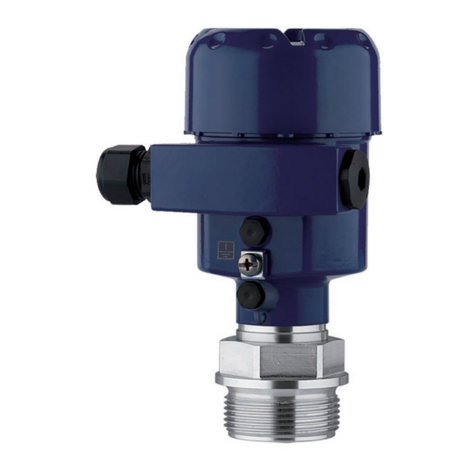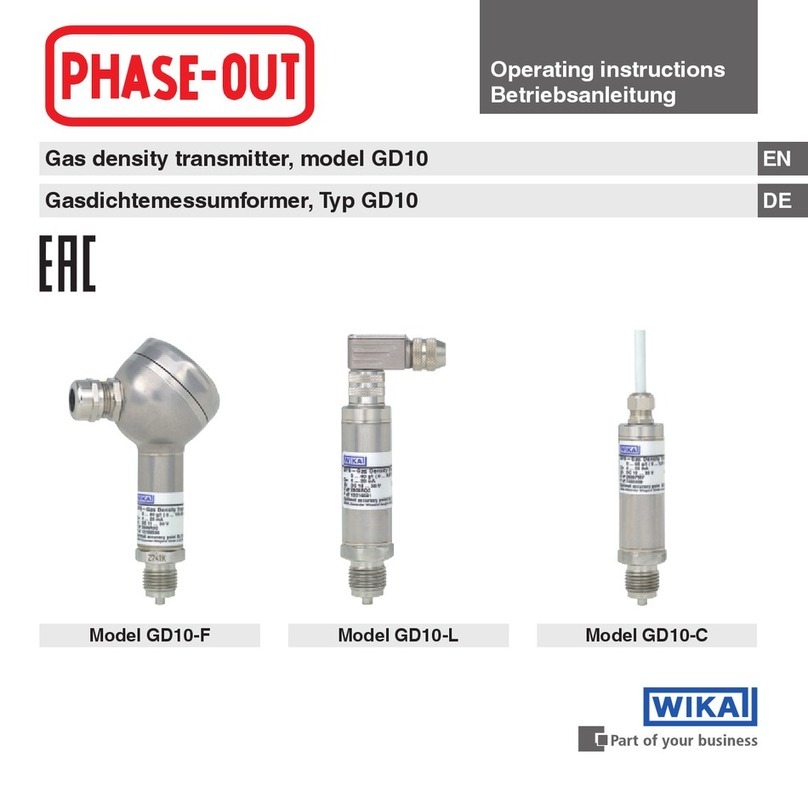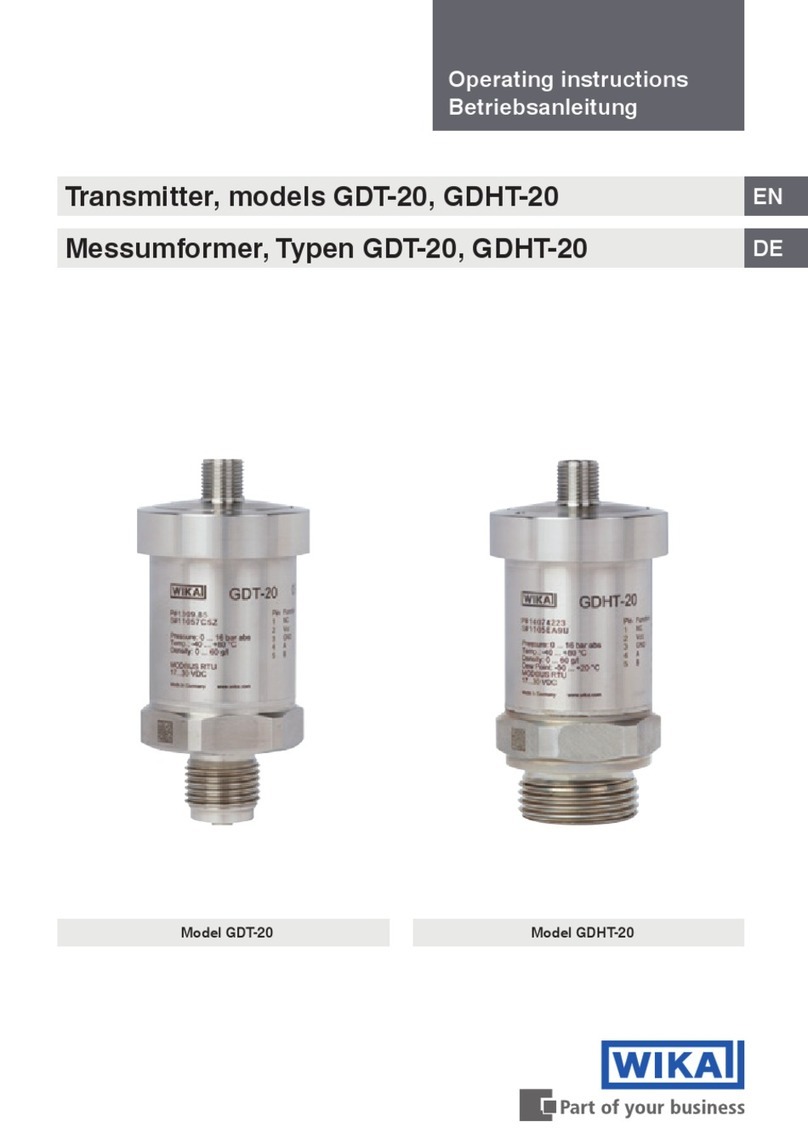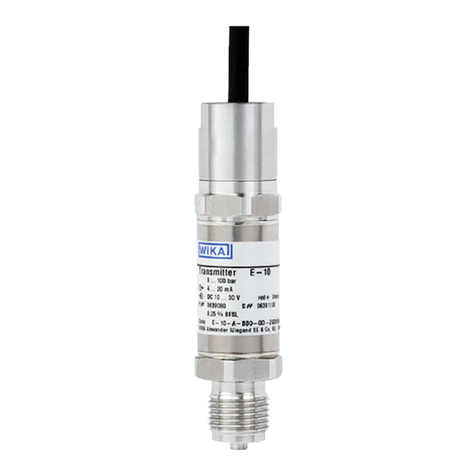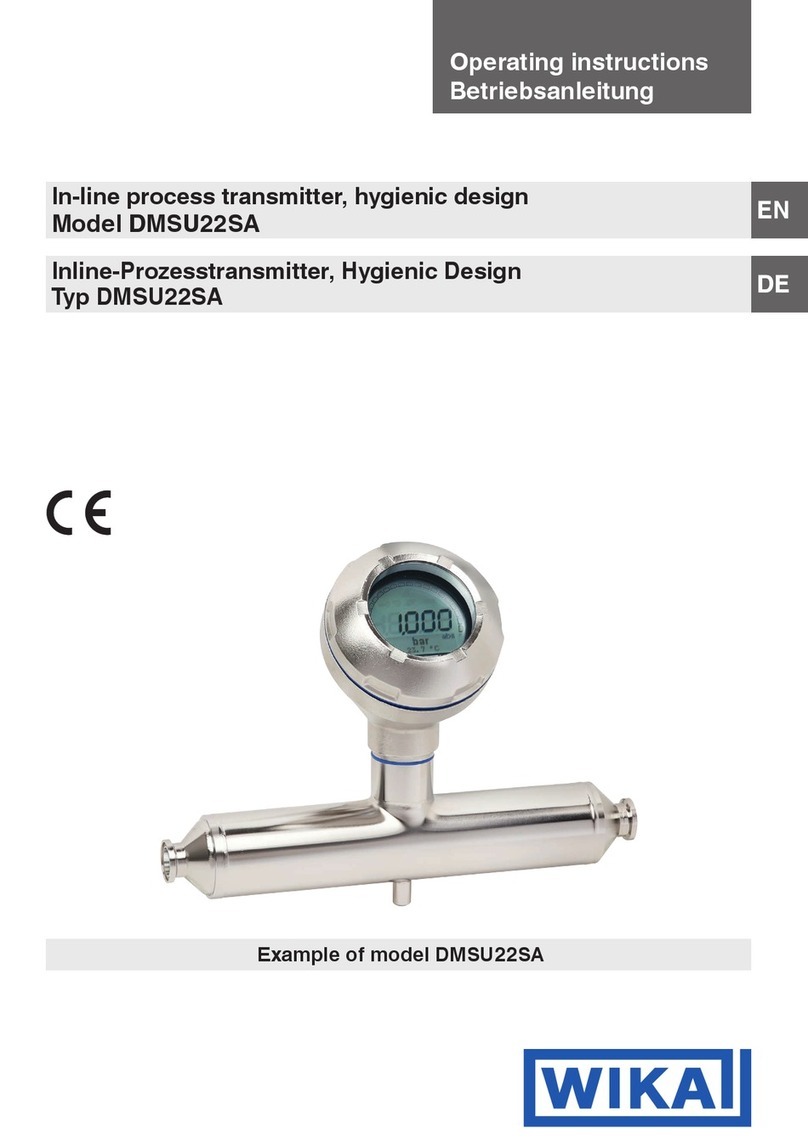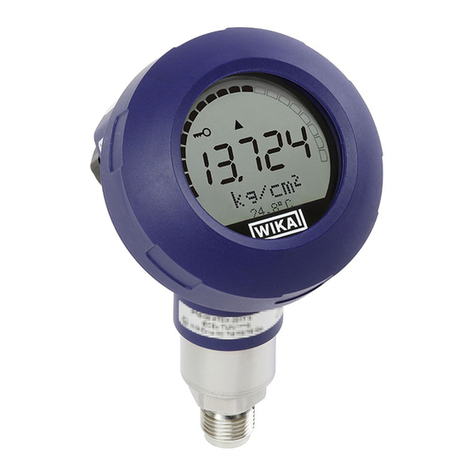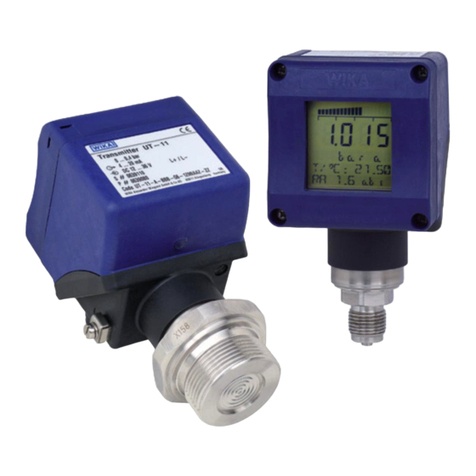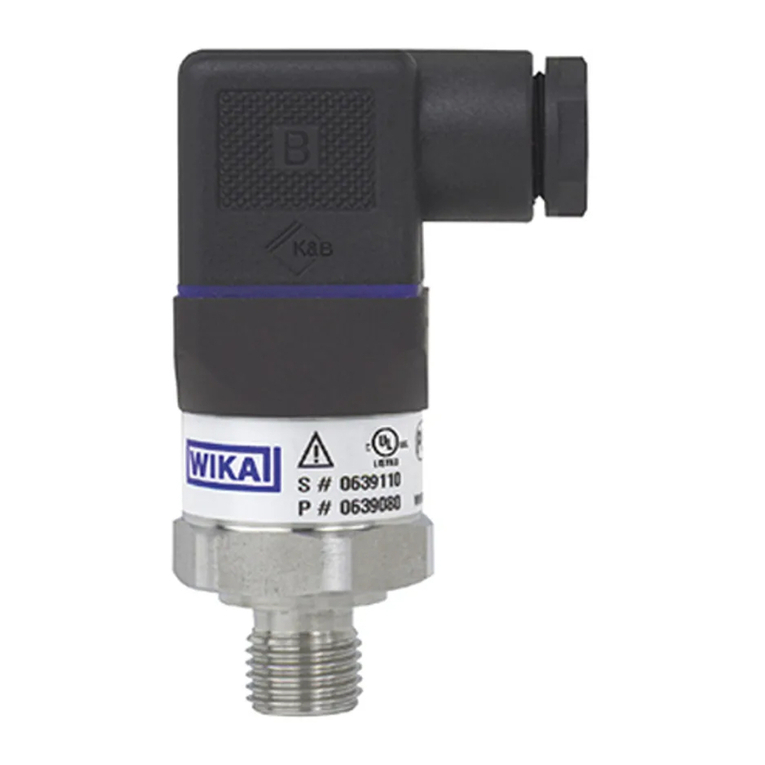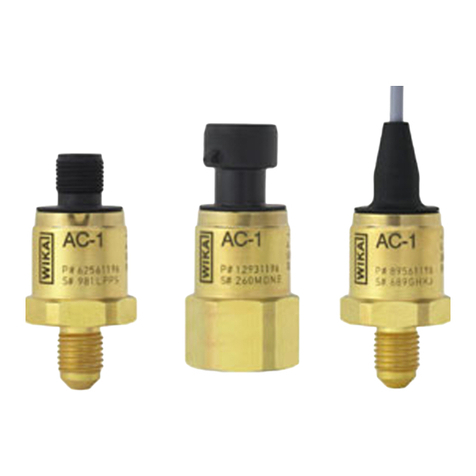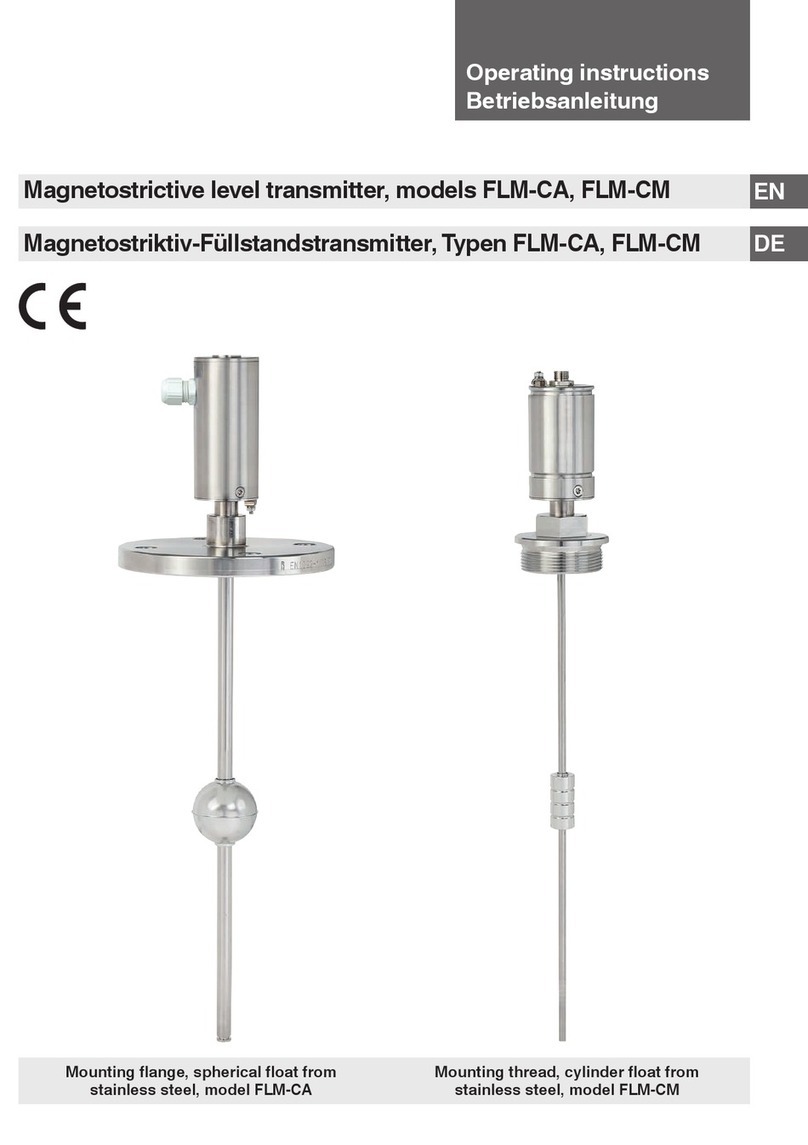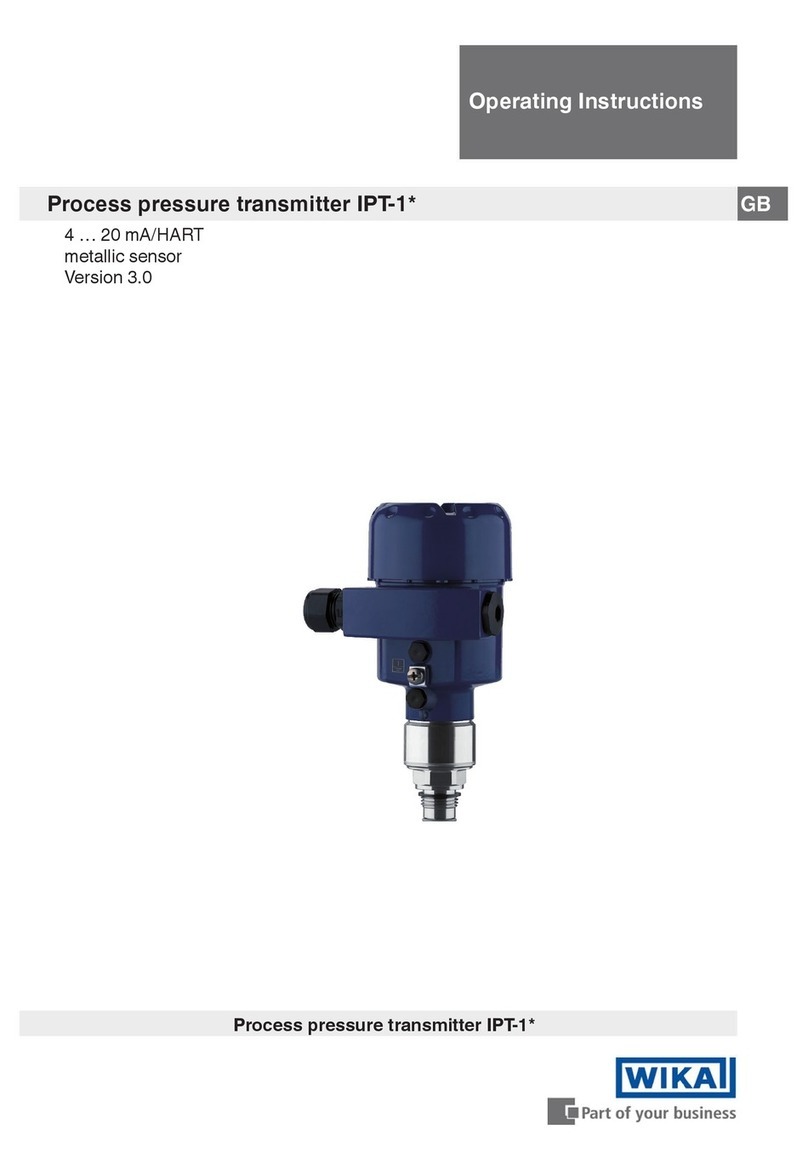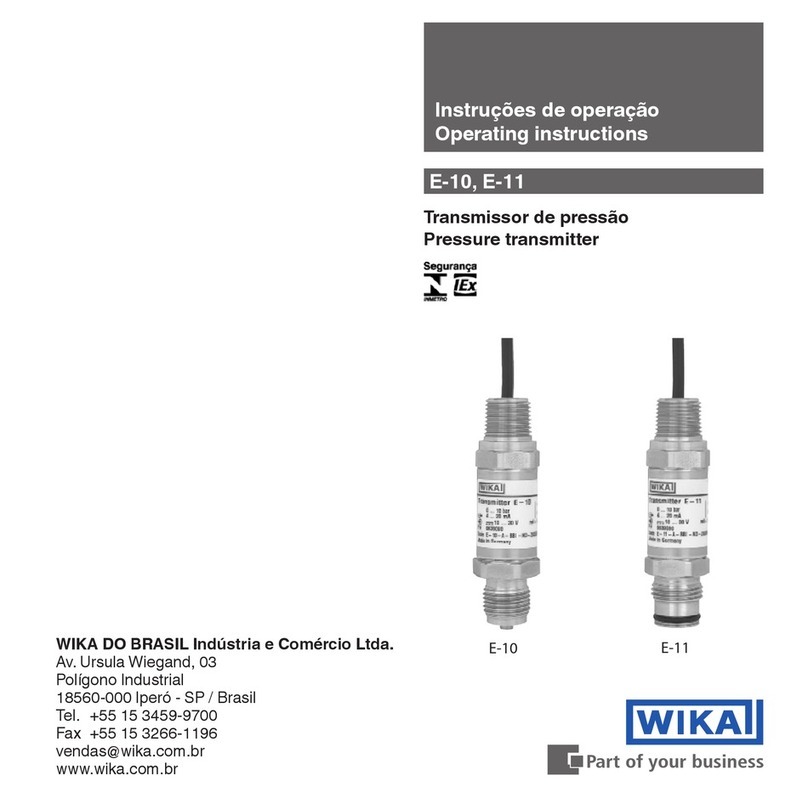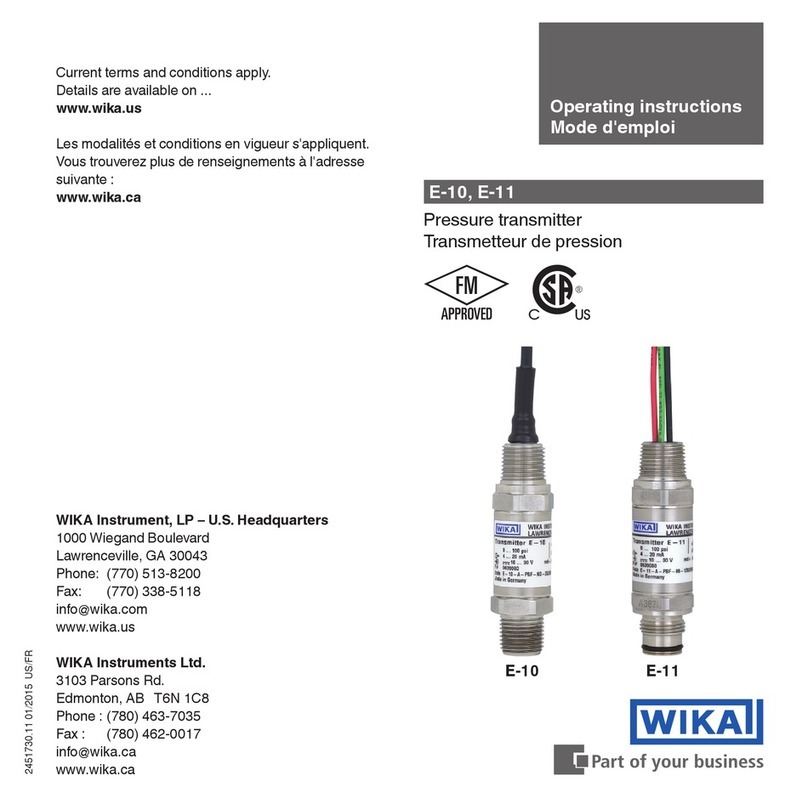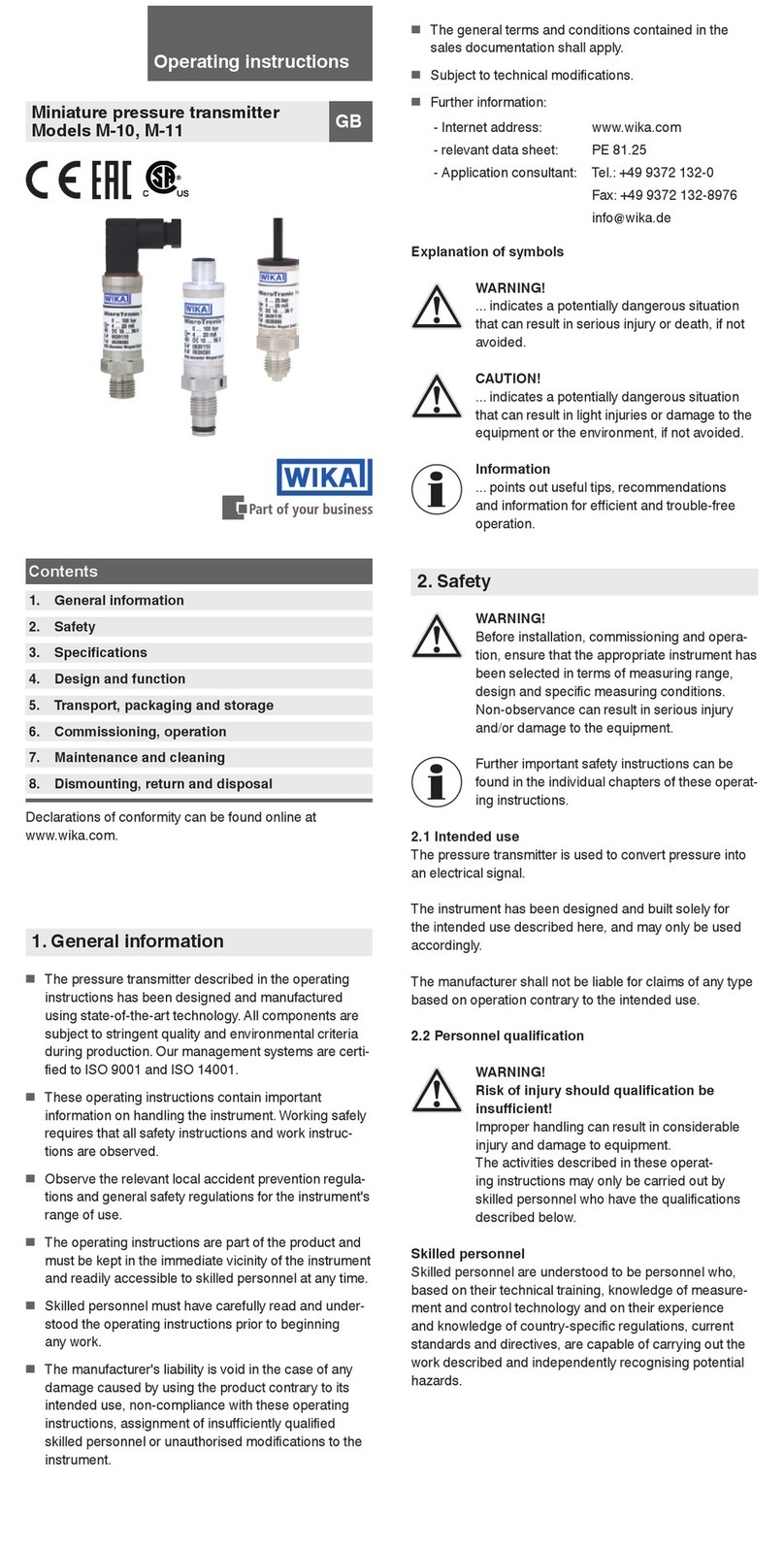
2
Contents
WIKA Operating Instructions - Dierential pressure transmitter DPT-20
Contents
1 About this document ............................................................................................................... 4
1.1 Function ........................................................................................................................... 4
1.2 Target group ..................................................................................................................... 4
1.3 Symbols used................................................................................................................... 4
2 For your safety ......................................................................................................................... 5
2.1 Authorised personnel ....................................................................................................... 5
2.2 Appropriate use................................................................................................................ 5
2.3 Warning about incorrect use............................................................................................. 5
2.4 General safety instructions............................................................................................... 5
2.5 EU conformity................................................................................................................... 5
2.6 NAMUR recommendations .............................................................................................. 6
2.7 Installation and operation in the USA and Canada ........................................................... 6
3 Product description................................................................................................................. 7
3.1 Conguration.................................................................................................................... 7
3.2 Principle of operation........................................................................................................ 8
3.3 Supplementary cleaning procedures.............................................................................. 10
3.4 Packaging, transport and storage................................................................................... 11
3.5 Accessories.................................................................................................................... 11
4 Mounting................................................................................................................................. 13
4.1 General instructions ....................................................................................................... 13
4.2 Instructions for oxygen applications ............................................................................... 15
4.3 Connection to the process.............................................................................................. 15
4.4 Mounting and connection instructions............................................................................ 16
4.5 Measurement setups...................................................................................................... 18
5 Connecting to the bus system.............................................................................................. 27
5.1 Preparing the connection ............................................................................................... 27
5.2 Connecting..................................................................................................................... 28
5.3 Wiring plans ................................................................................................................... 29
5.4 Switch-on phase............................................................................................................. 33
6 Set up the sensor with the display and adjustment module............................................. 34
6.1 Insert display and adjustment module............................................................................ 34
6.2 Adjustment system......................................................................................................... 35
6.3 Measured value indication.............................................................................................. 36
6.4 Parameter adjustment - Quick setup .............................................................................. 37
6.5 Parameter adjustment - Extended adjustment................................................................ 37
6.6 Saving the parameterisation data................................................................................... 51
7 Set up measuring system ..................................................................................................... 53
7.1 Level measurement........................................................................................................ 53
7.2 Flow measurement......................................................................................................... 55
8 Diagnosis, asset management and service ........................................................................ 57
8.1 Maintenance .................................................................................................................. 57
8.2 Diagnosis memory ......................................................................................................... 57
8.3 Asset Management function........................................................................................... 58
8.4 Rectify faults................................................................................................................... 60
8.5 Replace process anges................................................................................................ 61






